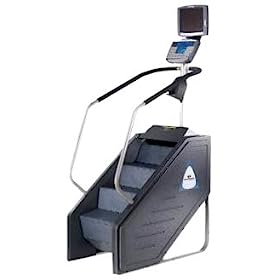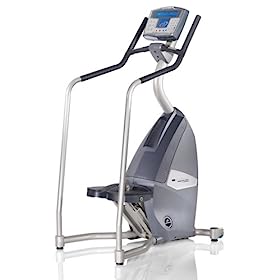1ADAM12
New member
- Joined
- Apr 7, 2004
- Messages
- 1,088
- Reaction score
- 129
Keep it up Brian! I weighed in this morning at 185.  Damn my new body feels good
Damn my new body feels good 

Went from 195 to 215 during the holidays. I really believe it was do to the lack of excerise, well maybe a little to much food also. Have only ridden my mt bike 230 miles the last 3 months mainly because the trails have been to wet to ride. I weighed myself this morning and I am down to 205. Hopefully the trails stay dry.
last year I had a gym membership, realized it really just kept me out of the woods for $50 a month.
Alistair, have you thought of getting beheaded? 10 pounds of ugly fat. Gone, just like that!Still stuck at 200, can't break below that magic number.
I am 71 and walk 5-8 miles PER DAY as I get ready for my second run at the AT. Today I reached 180 miles ofr this year. I need to lose 20 pounds
by the beginning of May. So far I am down 11#. This week I started doing knee bend curls holding 10# in each hand. Lasst week I looked over the AT profiles for Gorgia and saw that worst case for first couple of weeks was a 1000 foot elevqation rise for 1 mile. I did some trignometry and decided that this represented a 11 degree slope. So, I got on the tread mill and set it for 11 degrees. The hypotenuse for the 1000 foot elevation was 1.03 miles. So, after a couple of weeks I have set it to 12 degrees and walk on it at 3.5 miles per hour for 2 miles. This represents an elevation rise of 2700 feet.
I am hoping that this will help me go up those hills in Gorgia. At 71 I do not expect to do the whole trail again. This trip I hope to go 164 miles to Fontana dam. This is how I am preparing for my hike.
Gordon
I am 71 and walk 5-8 miles PER DAY as I get ready for my second run at the AT....[EDIT]... Lasst week I looked over the AT profiles for Gorgia and saw that worst case for first couple of weeks was a 1000 foot elevqation rise for 1 mile. I did some trignometry and decided that this represented a 11 degree slope. So, I got on the tread mill and set it for 11 degrees. The hypotenuse for the 1000 foot elevation was 1.03 miles. So, after a couple of weeks I have set it to 12 degrees and walk on it at 3.5 miles per hour for 2 miles. This represents an elevation rise of 2700 feet.
I am hoping that this will help me go up those hills in Gorgia.
Strictly speaking (basic physics):Somebody might correct me, but...Inclined treadmills and Stairmaster type machines are nothing like hiking a hill or doing actual stairs. I always felt all I was doing was lifting my legs forward on the machines, as opposed to lifing my entire body weight up the actual hill or stairs.
... the work being done is only moving the center of mass of each of your legs up and down, plus some rotational and inefficiency terms.
TCD
I think in both cases one would have to compare the "natural" event with a corresponding machine driven at a steady speed by a strong motor so the user couldn't make the "ground" respond to his motions. (The "stepper" would have to be a rotating staircase (ie a descending escalator), not the two independent resistance units found on the only stepper that I have used.)Seriously, I think you're right about the treadmill incline, but I don't think the same applies to a stair stepper with moving steps. There, the work being done is set by the resistance of the steps to being pushed down. Asuming no handholds, the usable range of the step resistance is from zero to just less than user bodyweight. If the resistance is set low, the work being done is only moving the center of mass of each of your legs up and down, plus some rotational and inefficiency terms.
The "stepper" would have to be a rotating staircase (ie a descending escalator), not the two independent resistance units found on the only stepper that I have used.


OK. Never tried one... (Don't recall ever having seen one either.)Yes, you want a "stair mill" like the old skool StairMasters BITD...
I already answered this one a few posts ago--the same.Question for the physics geeks: would it make a substantive dfference in work effort if you move your body up fixed stairs (like a stadium or a hi-rise stairwell) or if you step up onto a rotating step on a stairmill? It seems like the stairmill should be easier, since the steps are falling down away from you, but you still have to push your body up onto the next step, even though you don't actually climb any higher.
Yes, you want a "stair mill" like the old skool StairMasters BITD...Question for the physics geeks: would it make a substantive dfference in work effort if you move your body up fixed stairs (like a stadium or a hi-rise stairwell) or if you step up onto a rotating step on a stairmill? It seems like the stairmill should be easier, since the steps are falling down away from you, but you still have to push your body up onto the next step, even though you don't actually climb any higher...
I already answered this one a few posts ago--the same.
Work equals force times distance. Your feet are still supporting the same amount of weight and they climb the same distance.
Doug
Somebody might correct me, but...Inclined treadmills and Stairmaster type machines are nothing like hiking a hill or doing actual stairs. I always felt all I was doing was lifting my legs forward on the machines, as opposed to lifing my entire body weight up the actual hill or stairs.